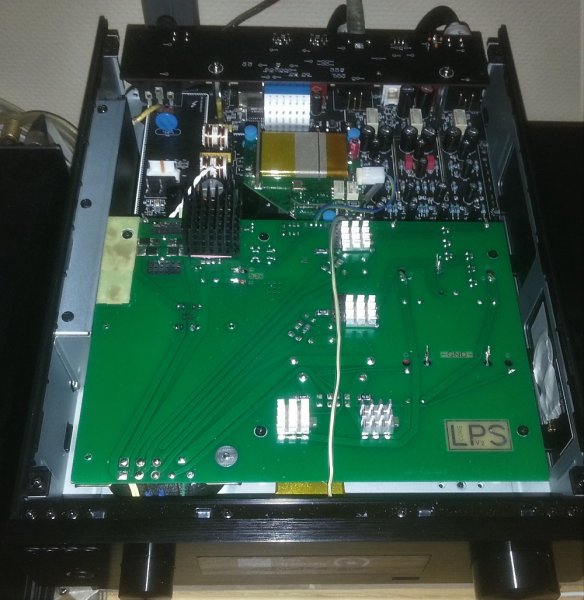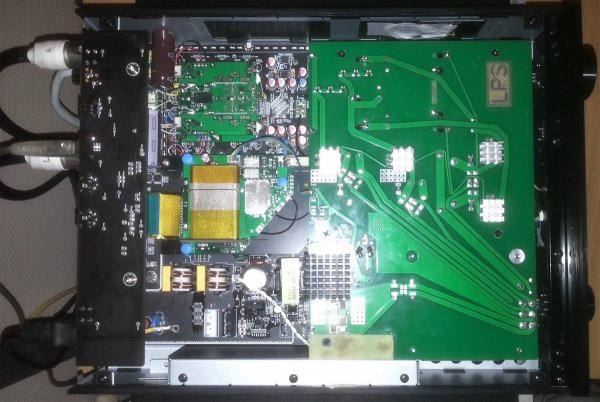Sonica DAC, another product of Oppo, with last version of the most advanced DAC chip inside. A product which sadly, it will not be produced anymore, as the rest of the Oppo series...
I started recently taking a closer look on Sonica, trying to figure out what it could be improved and upgraded, to squeeze out of this device most (or all) of its performances and quality potential.
First step, replacing the small SMPS (switching mode power supply) inside. Why Oppo designers have found out a such way to power a so low power device, it may be a mystery (for us, not for them)...
I decided to redesign the power supplies for Sonica, using only analogue /linear type PSU, and placing all on a single board. I used only one R core transformer, for the whole device (both digital and analogue sections). The result is to be seen in the pictures hereby.
Some details about the new linear PSU for Sonica: it contain a powerful regulator for digital section (this section it need approx. 10w power). The winding in the transformer designated to this digital power rail is double shielded, and the final filtering cell of the regulator it consist of very large capacity caps (also my LPS approach).
On LPS board are to be found also the regulators (all ultra low noise regulators on board TPS7A) for +/- 12v rails, as two pre regulators for DAC chip power rails. All the regulators are to dissipate the (quite low level) heat through the enclosure cover. The board of the LPS it fit perfectly inside (the original components in power system are removed). The components of the original SMPS are still on board, but its functionality is dismissed. The HF filtering cell (which is very good also), at the device AC input is used for the new LPS. Aslo it is added a DC blocking filter on LPS board. The outputs of the LPS regulators are connected to the main board in power input points.
So far, so good... In the next posts it will follow the next upgrades steps...
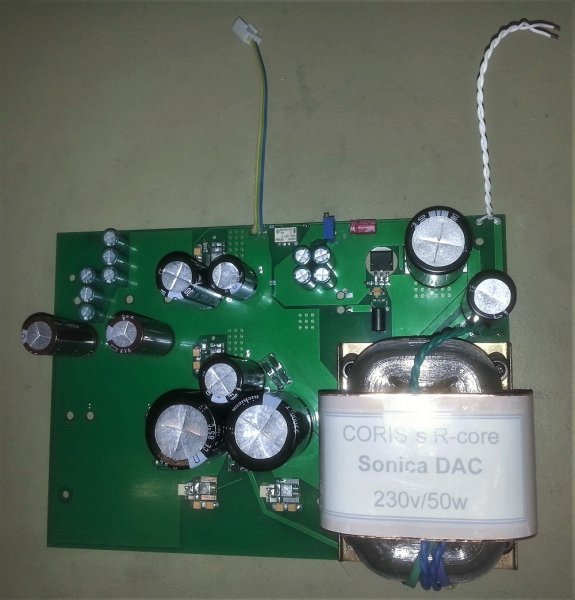
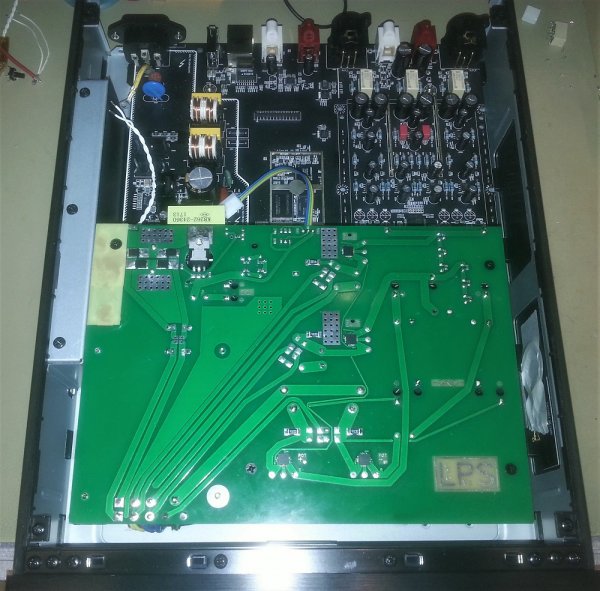
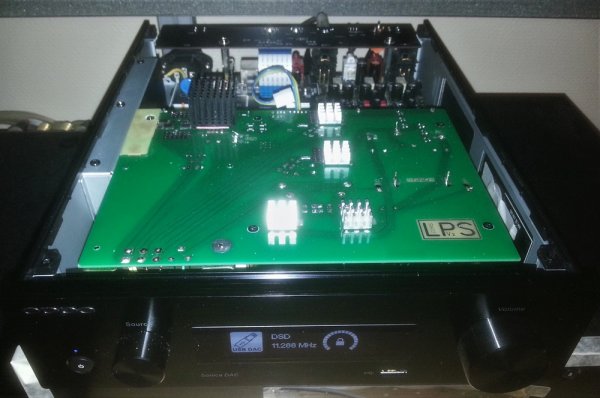
I started recently taking a closer look on Sonica, trying to figure out what it could be improved and upgraded, to squeeze out of this device most (or all) of its performances and quality potential.
First step, replacing the small SMPS (switching mode power supply) inside. Why Oppo designers have found out a such way to power a so low power device, it may be a mystery (for us, not for them)...
I decided to redesign the power supplies for Sonica, using only analogue /linear type PSU, and placing all on a single board. I used only one R core transformer, for the whole device (both digital and analogue sections). The result is to be seen in the pictures hereby.
Some details about the new linear PSU for Sonica: it contain a powerful regulator for digital section (this section it need approx. 10w power). The winding in the transformer designated to this digital power rail is double shielded, and the final filtering cell of the regulator it consist of very large capacity caps (also my LPS approach).
On LPS board are to be found also the regulators (all ultra low noise regulators on board TPS7A) for +/- 12v rails, as two pre regulators for DAC chip power rails. All the regulators are to dissipate the (quite low level) heat through the enclosure cover. The board of the LPS it fit perfectly inside (the original components in power system are removed). The components of the original SMPS are still on board, but its functionality is dismissed. The HF filtering cell (which is very good also), at the device AC input is used for the new LPS. Aslo it is added a DC blocking filter on LPS board. The outputs of the LPS regulators are connected to the main board in power input points.
So far, so good... In the next posts it will follow the next upgrades steps...



Last edited:


